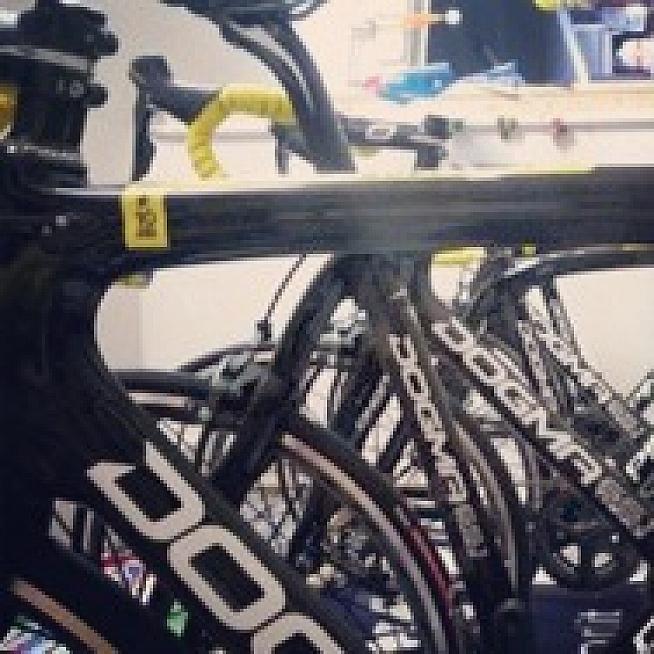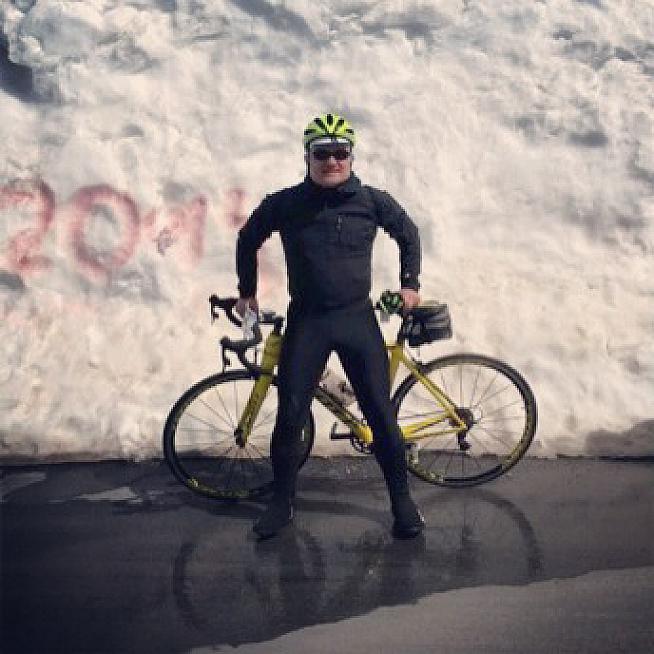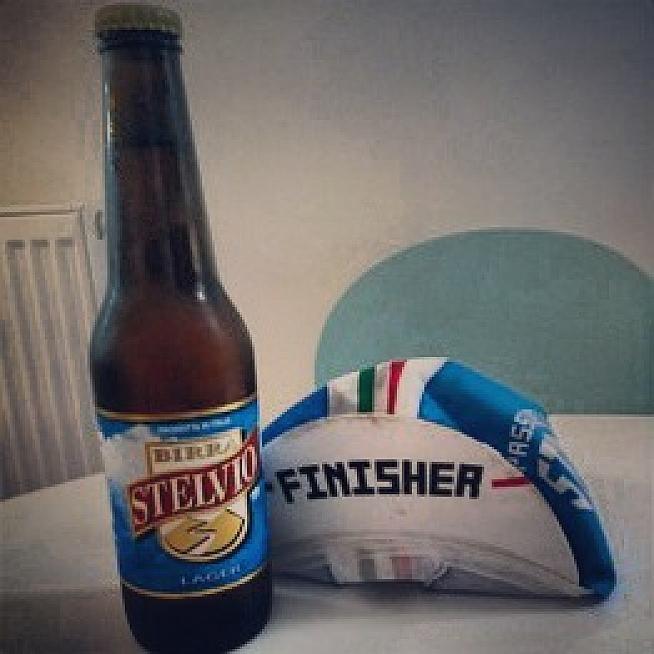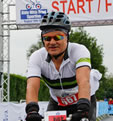Sometime around 250BC, the armies of the Roman Empire marched in to Lombardy, Northern Italy. With their penchant for straight roads, legend has it that the road builders threw down their plans in disgust when they hit a town called Bormio situated at the foot of the Stelvio - the summit of which is accessed via forty un-Romanesque hairpin bends. The sign that greeted the conquering legionnaires at the foot of the Stelvio read "Are you Tough Enough?"
I know all this because, like the daunted armies of Rome, I too recently visited Bormio - the town that hosts the start of the Gran Fondo Stelvio Santini. Now in its third year, this is an event that has rapidly established itself as alongside the Marmotte and Etape as a must-do sportive.

It was due to this spectacular rise in popularity that I signed up for the event last year with Dudley Samuels and his team at 5034Events. Dudley and his crew have been organising cycling trips to Italy since Nero learnt to fiddle and this experience really paid off with the fantastic choice of hotels in the area and the convenience of the registration and signing on. Should anyone want a recommendation for a great cycling hotel, the Funivia with its organised rides, well equipped workshop and fleet of luxury Pinarellos has to be the best around.
The town of Bormio and the surrounding area is drenched in the rich history of Italian cycling. Within touching distance there are mythical climbs to the snowy passes of the Gavia, the Mortirolo, and of course the Stelvio. These are climbs and mountains that have helped to define the Giro d'Italia and have played host to legendary battles between Coppi and Bartali, Pantani and Indurain, or Roche and the whole of Italy. It is the history and soul on these snow capped mountain passes that make the Giro d'Italia, in my opinion, the greatest of the Grand Tours and made my trip to this area such a special pilgrimage. Whilst it does lack the polish and coverage of the Tour de France, I believe that the Giro is a more intimate, exciting tour - les formulaic and with the kind of passion that only the Italians can generate.
There can never be enough time to kill in this part of the world, and as Friday and Saturday were free days there were plenty of opportunities to test out the hire bike. I sought a route along the valley and climbed the top of the Mortirolo. The journey back was against a ferocious headwind against a slow and grinding gradient. It was during this trip that I decided against the full Gran Fondo, which included the Mortirolo, and opted for the slightly shorter Medio Fondo instead.
The Stelvio offers three routes: the short one is 60km with 1950m of ascent, the Medio Fondo is 138km and 3053m, while the Gran Fondo tops out at 151km with 4058m of climbing. The ability to change routes at short notice is one of the better aspects of this sportive; while one may feel fit and healthy in October when the event is booked, events can take hold by the time June comes round. In my own case, a house move and various weekends lost packing and unpacking were getting in the way of training. So, rather than risk the broom wagon I opted for the Medio Fondo - but do not fear, each of the three routes include the climb up the iconic Stelvio itself.
The day itself started with a beautiful sunrise over the snow topped mountainous landscape. Riders were descending on the town from all directions and were grouped into three pens - pros, racers and the rest. When the flag drops though, it really is every man for himself.

Having opted against the climb of the Mortirolo, I found a sturdy looking Belgian and took his wheel along the floor of the valley and the steady elevation against the wind all the way back to Bormio. Along the way, local carabinieri were pleased to assist by pushing riders along, children offered cold water and elderly people leaving church voiced encouragement. Surely they knew that our fate on the Stelvio would indeed take us closer to the heavens as many of us had been before.

While not much is made of the broom wagon, there is a cut off point by which all riders must be back at Bormio and at the base of the Stelvio: 14:30 is the time by which any prospective mountaineers must be on the slopes. To be honest, the feed stations had such beautiful food that it would be easy to miss the cut off by just gorging on the delicious array of cold meats, pizza and fresh fruits.
Having to tear myself away from the final feed station was bad enough, but doing so to climb the Stelvio was just unfair. The climb starts pleasantly out of Bormio, but before long you are looking down on the valley and entering tunnels that have previously only been seen on Eurosport coverage.
The climb is steady with a small section of 14%, but the headwinds and the sun combined with the views of the endless switchbacks can interfere with one's morale. The hairpins are numbered, but there are 46 of them and they seem to wind down very slowly - so my advice is to ignore the numbers and focus on pedalling.

Before long you are cycling alongside 3-metre-high walls of snow, which offer respite from the mountain winds and also give you the opportunity to cool down. I couldn't resist the opportunity of scooping handfuls of the snow and placing it on my head to cool down in the sun. It was hard to believe that just five days earlier, the weather had been so bad that the Giro had neutralised the descent off the top of the Stelvio - and the year before, the summit finish was abandoned due to terrible conditions.
At the top of the climb Mr Santini himself was handing out the finishers caps, but the day was not quite finished. After a brief respite and the swapping of war stories with friends in a heated marquee it was time for a change of clothing (you were advised to pack a bag that would be transported to the top for the descent) and a thrilling descent back to base in minus 10 wind chill.

Read Joe Saumarez Smith's Stelvio ride report.
0 Comments





